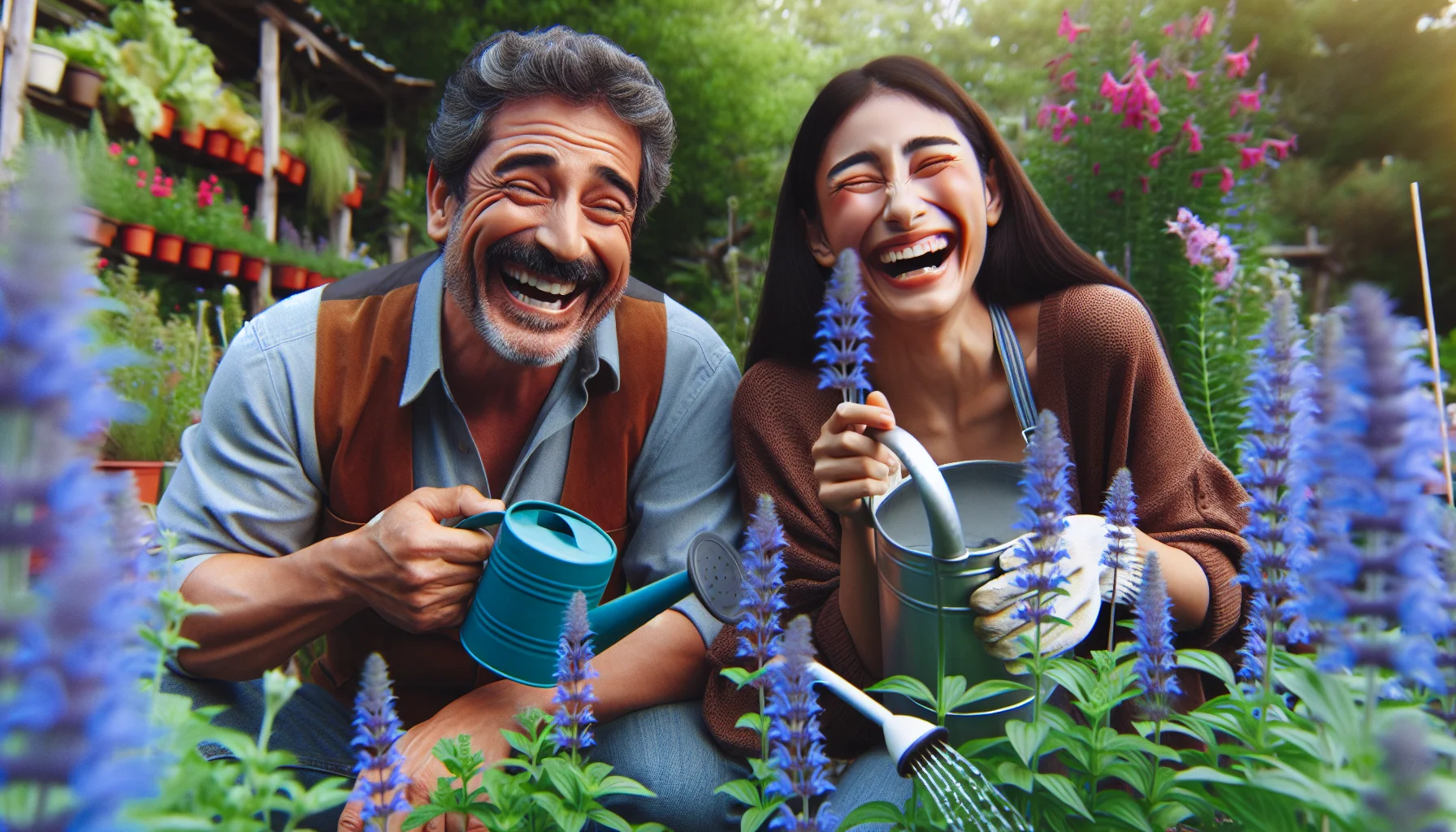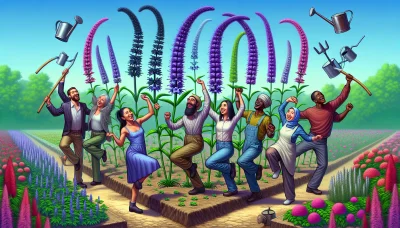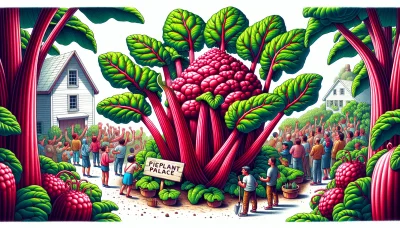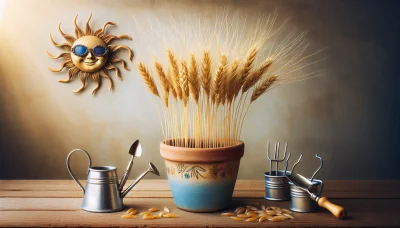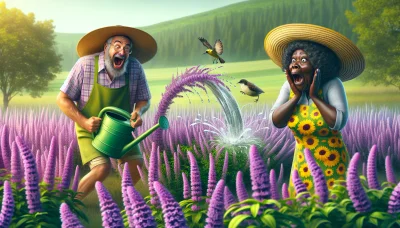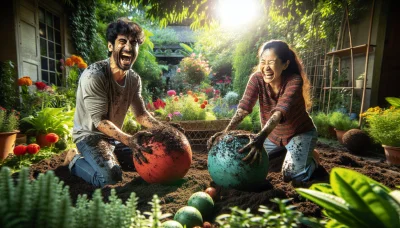Blue salvia Quiz
Test Your Knowledge
Question of
Introduction to Blue Salvia: A Gardener's Guide
Blue Salvia, a standout plant in any garden, is celebrated for its vibrant blue flowers and the ease with which it brings life to garden spaces. As a favorite among gardeners, it not only adds a splash of color from late spring through fall but also attracts pollinators such as bees and butterflies, enhancing biodiversity. Its drought-resistant nature and minimal care requirements make it an excellent choice for both novice and experienced gardeners looking to add long-lasting color and texture to their landscapes.
What is Blue Salvia?
Blue Salvia, also known by its botanical name Salvia farinacea, is a popular perennial plant that belongs to the mint family, Lamiaceae. This striking plant is renowned for its vibrant blue flowers, which bloom prolifically from early summer until the first frost. Native to Mexico and parts of the United States, Blue Salvia has been widely cultivated for its ornamental beauty and its ability to attract pollinators such as bees and butterflies. It features lance-shaped, green leaves and produces tall spikes of flowers that can vary in shade from deep to light blue, sometimes with white or purple accents. Blue Salvia is drought-tolerant once established, making it a favored choice for gardeners seeking low-maintenance yet visually appealing plants.
How to Plant and Care for Blue Salvia
- Choosing a Location: Select a spot that receives full sun for most of the day. Blue Salvia thrives in areas that get at least 6 to 8 hours of direct sunlight.
- Soil Requirements: Plant in well-draining soil with a neutral to slightly acidic pH. Amend heavy clay soils with compost or peat moss to improve drainage.
- Planting: Space plants about 12 to 18 inches apart to ensure good air circulation. Plant at the same depth as the container they came in.
- Watering: Keep the soil consistently moist but not waterlogged during the first growing season. Once established, blue salvia is quite drought tolerant but will benefit from occasional watering during prolonged dry spells.
- Mulching: Apply a 2-inch layer of mulch around the base of the plants to retain soil moisture and suppress weeds.
- Fertilizing: Feed with a balanced, slow-release fertilizer in the spring. Avoid over-fertilizing, which can lead to lush foliage at the expense of blooms.
- Pruning: Deadhead spent blooms to encourage more flowers. Cut back in late winter or early spring to promote bushy growth and more blooms.
- Winter Care: In colder zones, mulch heavily after the first frost to protect roots. In milder climates, blue salvia may remain evergreen throughout the winter.
The Benefits of Growing Blue Salvia in Your Garden
Integrating blue salvia into your garden not only enhances its aesthetic appeal but also contributes significantly to its ecological health. The vibrant blue hues of salvia flowers add a striking visual contrast that can make any garden space come alive, drawing the eye and creating a serene and inviting atmosphere. Beyond their beauty, these plants are a boon for pollinators such as bees and butterflies, offering a rich source of nectar. This is especially crucial in urban and suburban settings, where natural pollinator habitats are increasingly scarce. Blue salvia is also known for its resilience and low maintenance, thriving in a variety of climates with minimal water once established. This makes it an excellent choice for gardeners looking to create a sustainable, pollinator-friendly garden without a high input of resources.
Common Pests and Problems with Blue Salvia
- Whiteflies: These tiny white insects can be found on the undersides of leaves, sucking sap and weakening the plant. Use insecticidal soap or neem oil to control them.
- Spider Mites: These minuscule pests cause yellow speckling on leaves by feeding on plant juices. Increase humidity and use a miticide if necessary.
- Snails and Slugs: These pests eat large holes in leaves during the night. Use bait or set traps to control their population.
- Powdery Mildew: A white, powdery fungus that coats leaves, stems, and flowers. Improve air circulation and treat with fungicides.
- Root Rot: Overwatering can lead to this condition, where roots turn brown and mushy. Ensure good drainage and reduce watering.
- Aphids: Small, green, or black insects that cluster on new growth and flower buds, sucking sap. Use insecticidal soap or neem oil to get rid of them.
Companion Plants for Blue Salvia
Companion planting involves placing plants together that benefit each other in various ways, such as enhancing growth, improving health, or providing pest control. This method takes advantage of the natural relationships between plants to create a flourishing garden ecosystem. For blue salvia, selecting the right companions can help in maximizing its beauty and vigor.
| Companion Plant | Benefits |
|---|---|
| Lavender | Repels pests and attracts pollinators, enhancing growth and bloom. |
| Rosemary | Similar water and sunlight needs; helps deter pests. |
| Yarrow | Attracts beneficial insects and improves soil health. |
| Zinnia | Attracts hummingbirds and butterflies, which pollinate the salvia. |
| Marigold | Repels pests and nematodes; bright colors draw in pollinators. |
Conclusion: Why Blue Salvia is a Must-Have for Gardeners
In summary, blue salvia stands out as a vibrant, low-maintenance addition to any garden. Its striking blue flowers not only add a splash of color from early summer through fall but also attract beneficial pollinators like bees and butterflies. With its drought-resistant qualities, blue salvia thrives in a variety of climates, making it an ideal choice for gardeners looking to create a resilient and wildlife-friendly garden. Incorporating blue salvia into your garden will not only enhance its aesthetic appeal but also contribute to a healthier, more vibrant ecosystem. Embrace the beauty and benefits of blue salvia and see your garden transform into a flourishing paradise.
